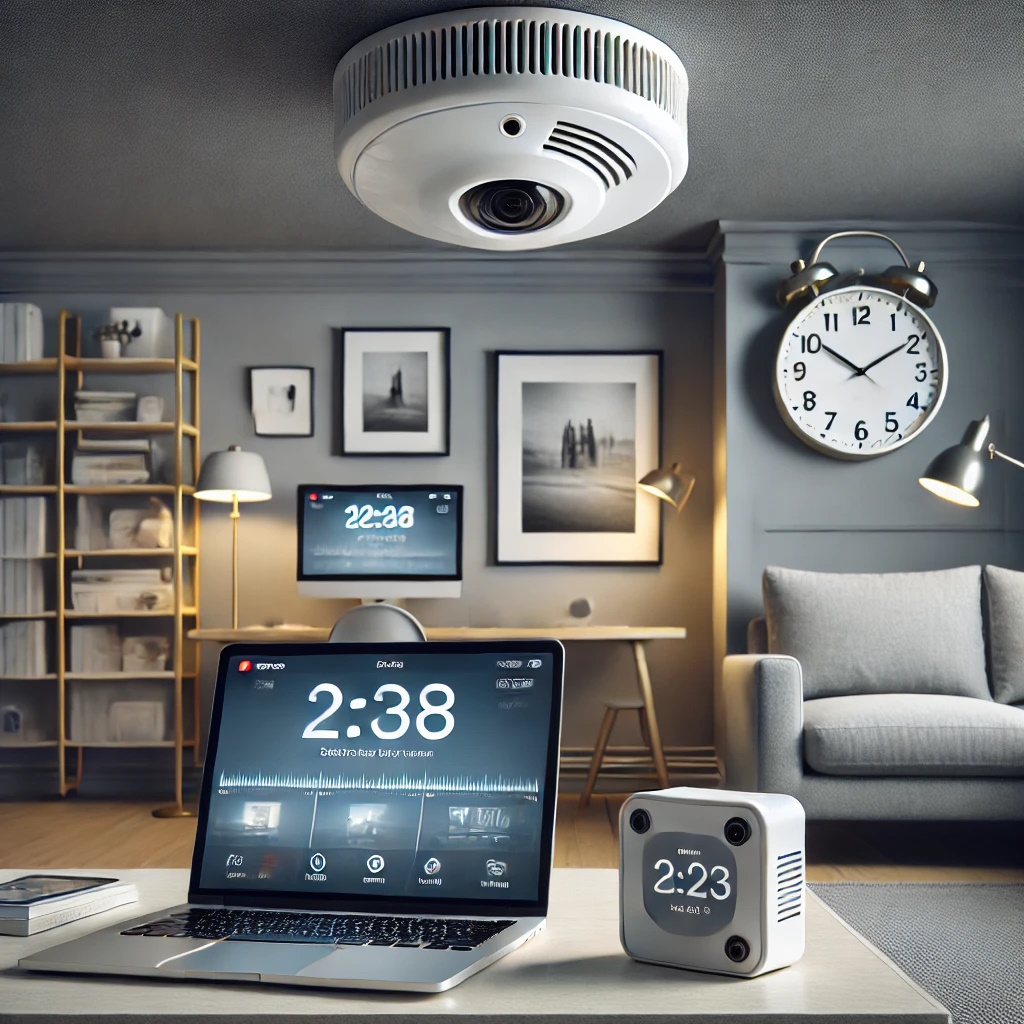How to Choose the Right Hidden Camera for Home Security18 September 2024 | Admin
In today's world, ensuring the safety and security of your home has never been more important. With advancements in surveillance technology, hidden cameras are becoming an increasingly popular option for homeowners looking to discreetly monitor their property. Whether you're concerned about intruders, monitoring service workers, or simply keeping an eye on family members, choosing the right hidden camera for your home can make all the difference. But with so many options on the market, how do you choose the right hidden camera? This guide will walk you through the key factors to consider so you can make an informed decision and enhance your home security effectively. 1. Determine Your Purpose The first step in choosing the right hidden camera is understanding your specific needs. Why do you want a hidden camera? Some common reasons include: - Monitoring the exterior** of your home to keep an eye on potential intruders. Your purpose will help you narrow down the features and type of camera best suited for your needs. For example, if you're monitoring outdoor activity, you'll need a camera with weatherproof capabilities. If you're concerned about keeping it discreet indoors, you'll want a camera that can blend seamlessly into your environment. 2. Decide on Camera Placement Where you plan to place your hidden camera is a critical factor in choosing the right one. Here are a few common types of hidden cameras and their ideal placements: - Smoke Detector Camera: Ideal for placing in common rooms, hallways, or entryways. These cameras are discreet because they look just like regular smoke detectors. Knowing where you plan to place the camera will guide your choice, as different placements have different technical requirements. 3. Consider the Camera's Resolution One of the most important technical aspects of any camera is its resolution. A high-resolution camera will capture clear images, making it easier to identify people or details. Most hidden cameras today offer at least 1080p HD quality, but if you’re looking for even better clarity, 4K resolution cameras are also available. While higher resolution is always better, consider the trade-offs such as larger file sizes and potentially higher costs. For general home monitoring, 1080p is often sufficient. However, if you want clear detail at long distances or to zoom in without losing quality, a higher resolution might be necessary. 4. Check for Night Vision Capability Home security isn’t just a daytime concern. Many security breaches occur under the cover of darkness, making night vision a critical feature in a hidden camera. Cameras equipped with infrared (IR) LEDs can record clear footage even in complete darkness. When shopping for a hidden camera, check if it has night vision and look at the range it can cover in low-light conditions. If you’re monitoring outdoor spaces or dimly lit rooms, night vision is a must-have feature. 5. Choose Between Wired and Wireless Cameras Next, consider whether you want a wired or wireless hidden camera. Both options have their advantages and disadvantages: - Wired Cameras: These are more reliable as they’re directly connected to a power source and typically offer continuous recording. However, they can be more difficult to install, and the presence of wires might limit where you can hide them. If you want a more flexible and easily concealed camera, wireless models are the better option. But if you need long-term monitoring without worrying about recharging, a wired model may be more suitable. 6. Look for Motion Detection and Alerts Many modern hidden cameras come equipped with motion detection technology, allowing them to only record when movement is detected. This feature is not only practical, but it also helps conserve storage space and power, ensuring the camera is only active when necessary. In addition to motion detection, some cameras can send real-time alerts to your phone or email whenever movement is detected. This feature provides instant notifications, giving you peace of mind that you’ll be immediately informed of any suspicious activity. 7. Storage Options: Cloud vs. Local Hidden cameras typically offer two main storage options: cloud storage and local storage (via an SD card). - Cloud Storage: Cameras that upload footage to the cloud allow you to access recordings from anywhere, as long as you have internet access. While convenient, cloud storage often comes with monthly fees, and there may be limits on how long footage is stored. - Local Storage: Cameras that store footage on an SD card or internal storage are great for those who want more control over their recordings without recurring fees. However, if the camera is found and taken, the footage may be lost along with the device. Choose a storage option that fits your preferences and needs. Many modern hidden cameras offer a combination of both for added flexibility. 8. Check the Camera’s Field of View Field of view refers to the area that the camera can capture. Cameras with a wide field of view can cover larger areas, making them ideal for open spaces like living rooms or backyards. If you’re monitoring a smaller area, such as a hallway or specific doorway, a narrower field of view may be sufficient. For maximum coverage in larger rooms or outdoor spaces, consider cameras with a 120-degree field of view or higher. --- Conclusion Choosing the right hidden camera for home security requires careful consideration of your specific needs, the placement of the camera, and the features that matter most to you, such as resolution, night vision, and motion detection. By weighing these factors, you can find the perfect hidden camera to protect your home and loved ones. Whether you’re looking for subtle indoor surveillance or keeping an eye on the perimeter, there’s a hidden camera out there for every security need. With the right choice, you’ll have peace of mind knowing your home is secure, both day and night. |
| |||||||
| Blog Categories | ||




